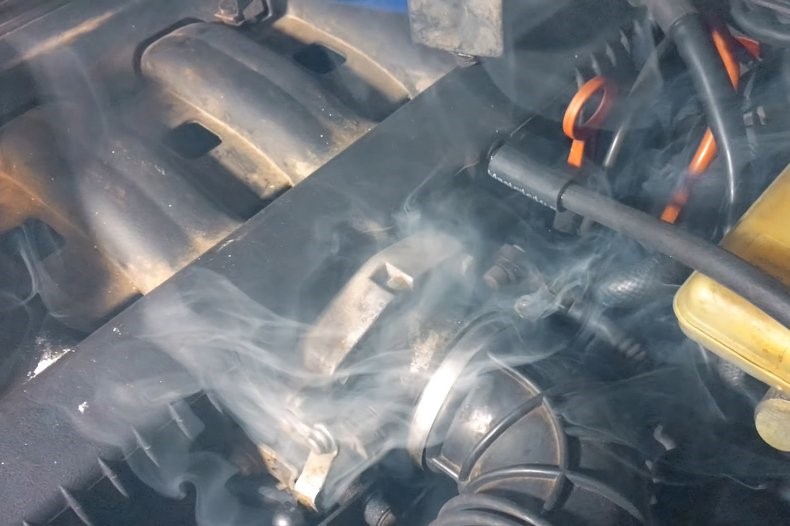An engine is a most important part of the vehicle. It helps to run the vehicle. Smoke from a car is a bad sign. This can be a simple problem, but there’s a good chance your car has a serious problem. Smoke often comes out of the car engine due to overheating. This can be caused by faulty cable housing, engine block heater residue, and overheated fluids such as oil, transmission fluid, and brake fluid.
The cooling system may also be defective or the engine may not have enough lubricant. Whatever the problem, you need to figure out which store to trust.
Types of Engine Smoke
An engine can emit the following types of smokes:
Black Smoke
Black smoke from the engine usually indicates that there is too much fuel. The air filter may be clogged. If you find a bug early, it’s usually easy to fix use cream deluxe for sale.
An engine emits the black smoke due to the following reasons:
1) Faulty fuel injector
The fuel injector delivers gasoline or diesel fuel to the engine in the form of a high-pressure mist. It can leak from dirt, poor quality fuel, or due to seal wear.
Both the seal and the injector itself can be replaced by a qualified mechanic.
2) Damaged fuel pressure regulator
As the name suggests, this part of the fuel delivery system regulates the pressure of both gasoline and diesel being fed to the car.
This part is located on the outside or inside of the tank and affects the replacement cost.
If you need to replace the fuel pump at the same time, please contact your nearest workshop.
3) Dysfunctional Carburetor
Older cars use carburetors to mix air and fuel. If a part breaks and sends too much gasoline or diesel into the engine, you will notice black smoke.
Your car can burn too much fuel and emit too much fuel, so it’s important to have the problem checked by an expert as soon as possible.
4) Blocked inlet manifold
The intake manifold supplies the engine’s cylinders with a mixture of fuel and air.
A clogged intake manifold allows only a limited amount of fuel-air mixture into the combustion system. This can cause the engine to emit a cloud of dirty smoke.
This part can be cleaned at home, but it’s best to seek professional help if you are unsure of what you are doing.
5) Ignition timing is off
For proper combustion, the fuel must ignite at the right time in the combustion cycle.
If the ignition timing is off, the engine burns more fuel than it needs and, in extreme cases, emits black smoke.
If you think your car is using too much fuel, you should have your engine checked by a reputable mechanic.
White Engine Smoke
White smoke from the engine usually indicates a coolant leak. This can be due to one of the following issues:
1) Damaged coolant/radiator hoses
Over time, the hoses that go in and out of the radiator can collapse, bulge, or burst, and you can check for damage by simply lifting the hood.
Replacement parts are inexpensive and should preferably be carried out by a professional.
2) Cracked Engine Block
The engine block holds all the important components of the engine together.
At extremely low temperatures, the coolant freezes and presses against the block wall, which can cause small cracks.
In rare cases, manufacturing defects can result in some parts of the engine block being thinner and more susceptible to damage than others.
You can try engine block sealer to fix minor cracks, but for more serious cracks you should go to a reputable shop.
The mechanic may need to re-weld part of the block or repair it using a method called cold metal stitching.
Remember that this work is very expensive and it may be cheaper to buy a new car.
3) Inlet manifold leaks
The intake manifold supplies the engine’s cylinders with a mixture of fuel and air. If oil leaks into the cylinder from the manifold, you can burn yourself with blue smoke.
Sealants can help fix small leaks, but they may only be a temporary fix. Seeking professional help is always the best option.
4) Head gasket failure
Cylinder head gaskets are used to seal the combustion process and can be damaged by overheating and oil leaking into various parts of the engine.
5) Damaged valve stem seals
The valve regulates the amount of fuel-air mixture that can enter the cylinder for combustion. These seals are usually made of high-strength rubber, but extreme temperatures and wear can cause them to crack or wear out.
Before replacing the valve seal, the mechanic usually uses a special tool to compress the valve spring.

